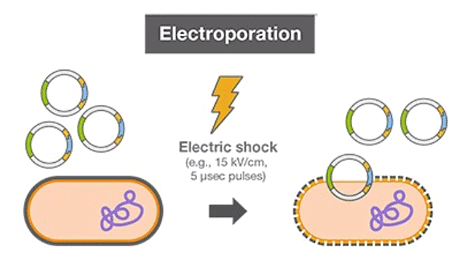Competent Host | Biology for Grade 12 PDF Download
What are Competent Cells?
The bacterial cells that can take up the foreign DNA from the surroundings by a process called transformation are known as competent cells. Griffith first reported it in Streptococcus pneumoniae. E.coli cells are more likely to uptake the DNA if their cell walls are altered. The cells can be made competent by calcium chloride and heat shock treatment. The cells growing rapidly can be made competent more easily than those in other stages of growth.
The cells might express the acquired genetic information after transformation. The process is largely used to introduce recombinant plasmid DNA into competent bacterial cells. This process does not require a donor cell, but only a DNA in the surrounding environment.
Principle of Competent Cells
Competent cells have altered cell walls that allow the DNA to easily pass through it. Some cells need to be exposed to some chemical or electrical treatments to make them competent. Treatment with calcium ions is the standard method for the preparation of these cells. Bacterial cells can also take up DNA through a process called electroporation.
Methods of Preparation of Competent Cells
Competence is achieved in two ways:
- Natural Competence
- Artificial Competence
Natural Competence
Bacteria take up DNA from the surroundings by transformation, conjugation, and transduction. The foreign DNA directly enters into the bacterial cell through transformation. For this, the cells need to be in a competent state.
Frederich Griffith was the first one to discover natural competence. He injected the smooth strain of pneumococcus in mice, and the mice died. This strain is therefore known as virulent strain. But the mice did not die when injected with the rough strain (non-virulent strain). Heat-killing abolishes the virulent nature of the smooth strain. The heat-killed smooth strain and the rough strain were mixed. The rough strain adopted the smooth phenotype and became virulent. This suggests that a heat-stable, non-living material obtained from the smooth strain facilitated transformation.
Artificial Competence
In this, the cells are permeable to DNA in the laboratory. The competent cells can be prepared artificially in two ways, namely:
- Calcium Chloride: This method was proposed by Higa and Mandel. The bacterial cells were treated with calcium chloride and then suddenly exposed to high temperatures. This is known as heat shock treatment method.

- Electroporation: In this technique, cells are subjected to an electric field to increase their permeability. It is also known as electropermeabilization.

|
122 videos|161 docs|138 tests
|
FAQs on Competent Host - Biology for Grade 12
| 1. What are competent cells? |  |
| 2. How are competent cells prepared? |  |
| 3. Why are competent cells used in molecular biology experiments? |  |
| 4. What are the advantages of using competent cells in genetic engineering? |  |
| 5. How are competent cells stored and used in the laboratory? |  |

|
Explore Courses for Grade 12 exam
|

|

















